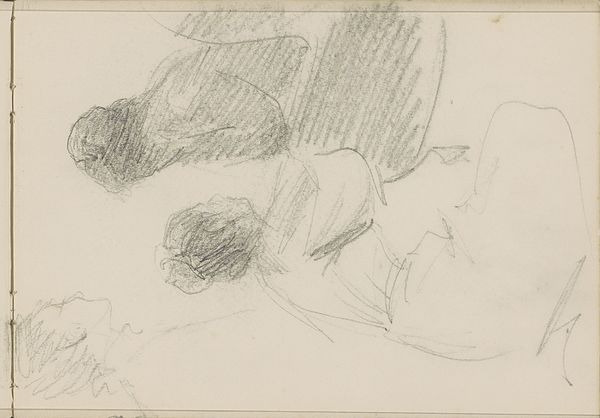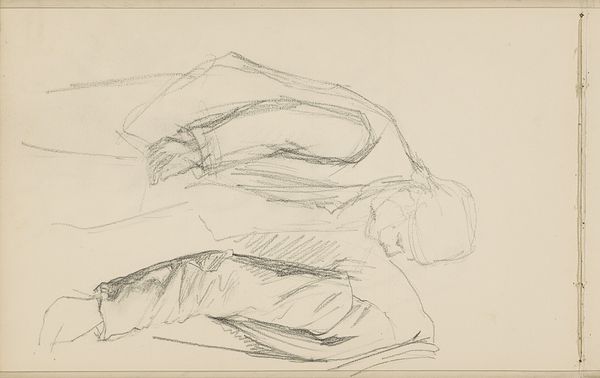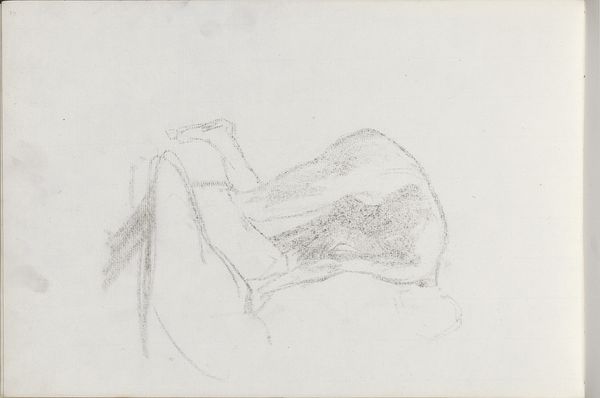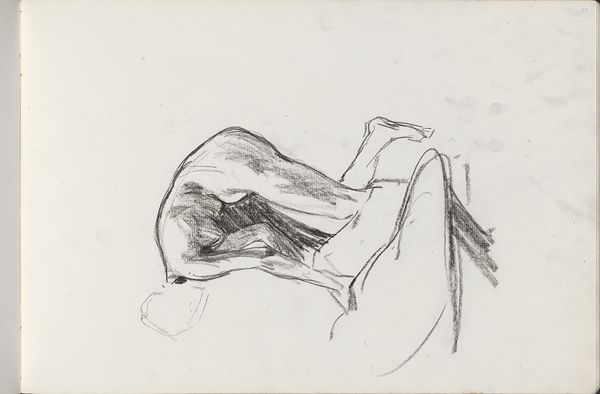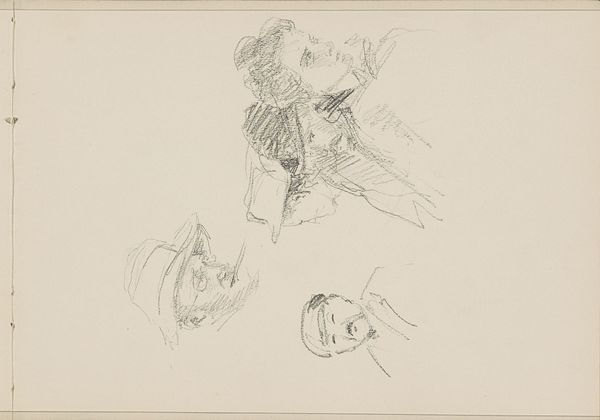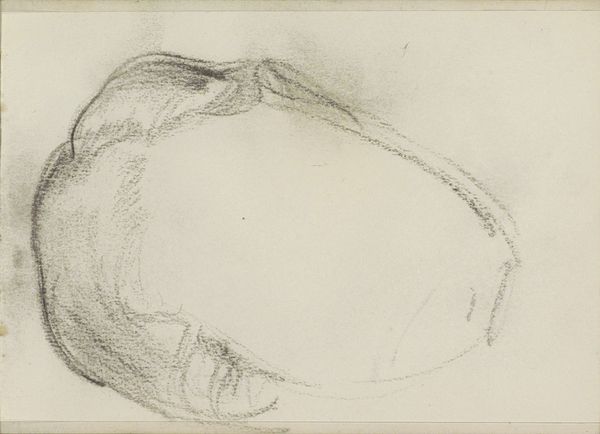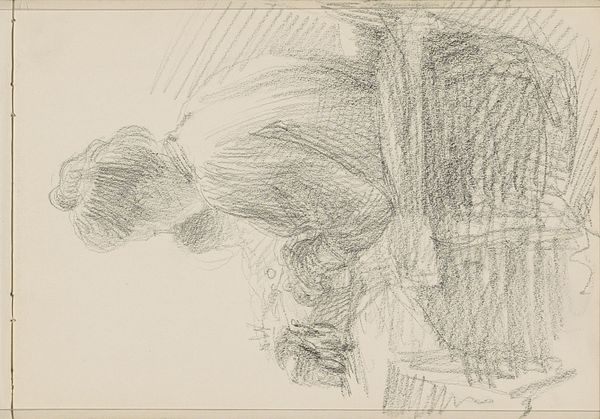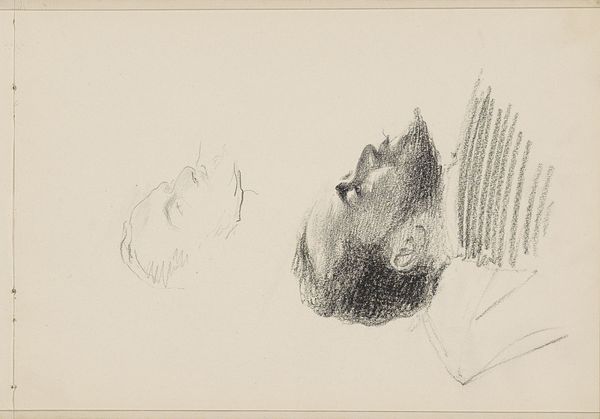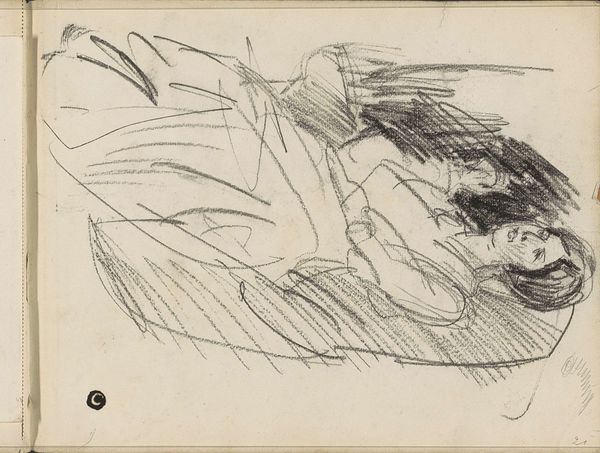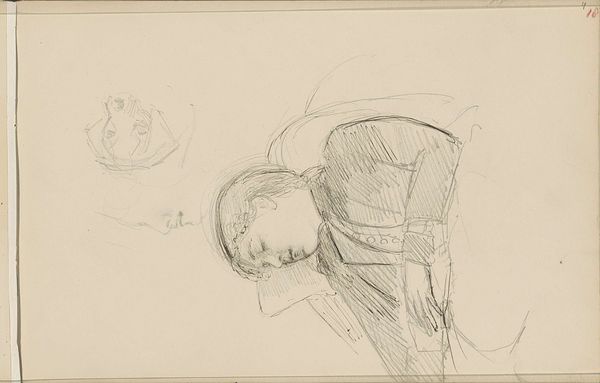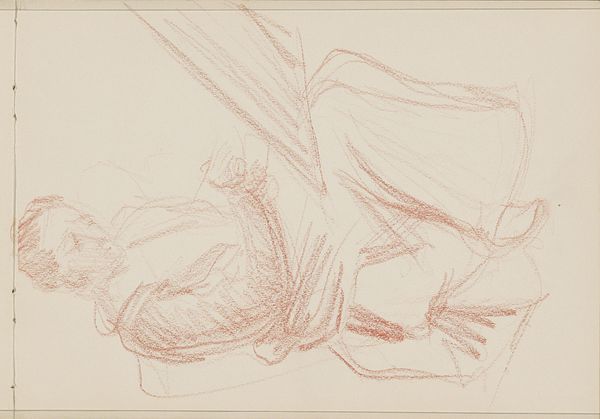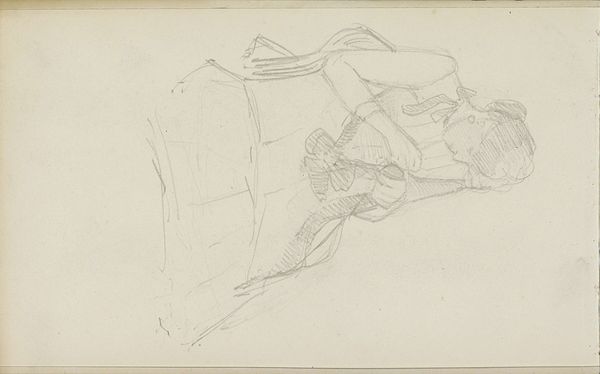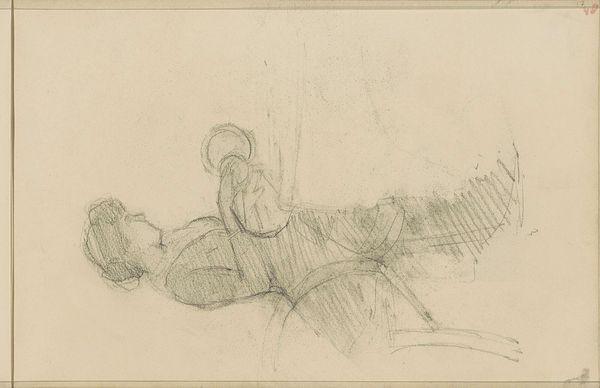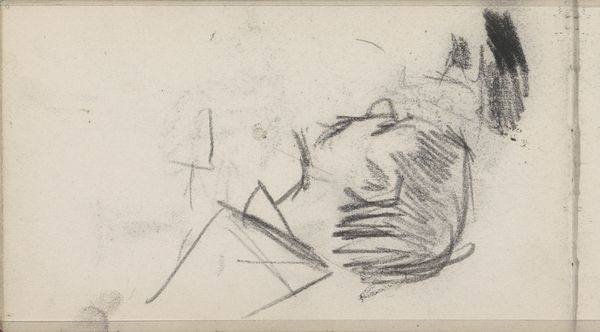
drawing, paper, pencil
#
portrait
#
drawing
#
table
#
pencil sketch
#
paper
#
pencil
#
realism
Copyright: Rijks Museum: Open Domain
Curator: It’s interesting how incomplete the sketch feels, but not in a negative way. There’s something deeply vulnerable and almost private about this, like stumbling upon a half-remembered dream. Editor: Precisely! What we are looking at here is a work simply titled "Meisje zittend aan een tafel," or "Girl Sitting at a Table." It’s attributed to Bramine Hubrecht and likely dates from the late 19th or early 20th century. You can see it today at the Rijksmuseum. This quick sketch is executed with pencil on paper, a very intimate and direct medium, I think. Curator: The choice of materials totally echoes what I'm saying. Pencil on paper, it’s almost…fleeting. Like the artist caught a glimpse of this girl and quickly jotted her down before the moment vanished. Did she ever finish it, I wonder? Editor: That’s one of the captivating things about sketches, isn't it? It captures a sense of immediacy. Think of the socio-economic conditions present at this period. There was an expansion of amateur art and a booming market for readily accessible materials, meaning that sketching as a practice gained tremendous traction and facilitated increased opportunities for self-expression, particularly for women artists. Curator: Self-expression... yes. The pose is so languid. Almost like she’s forgotten she’s in public. It is rare to see a women portrait where there is such carelessness and in such intimacy at the same time, as if the sitter almost forgets the viewer is looking. There is a palpable feminine fatigue emanating from it. And yet the overall atmosphere, thanks to the light strokes, is light and hopeful. Editor: Indeed, you point to the way social conditions shape these modes of expression. If photography at that period still was about stiff and monumental depictions of personality, these casual pencil drawings were quite groundbreaking on what concerns representations of the self. It offered novel and unprecedented degrees of casualness and self-exploration to art makers. Curator: Which makes it even more tragic to consider how many of these personal narratives are lost to history. You think of all the other sketchbooks filled with similar moments, gathering dust in attics. Thank goodness this one survived and made its way to the Rijksmuseum. Editor: I couldn't agree more! A truly great work offers a rich conversation with the past, while allowing for a sensitive insight on the present, and this humble pencil sketch delivers just that.
Comments
No comments
Be the first to comment and join the conversation on the ultimate creative platform.
